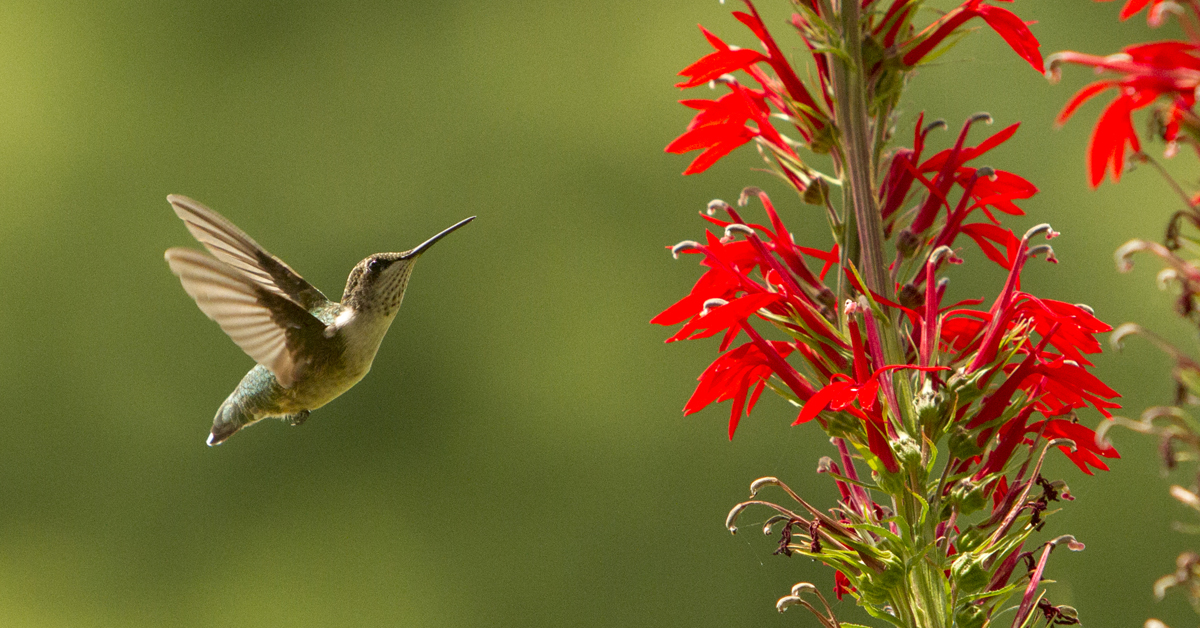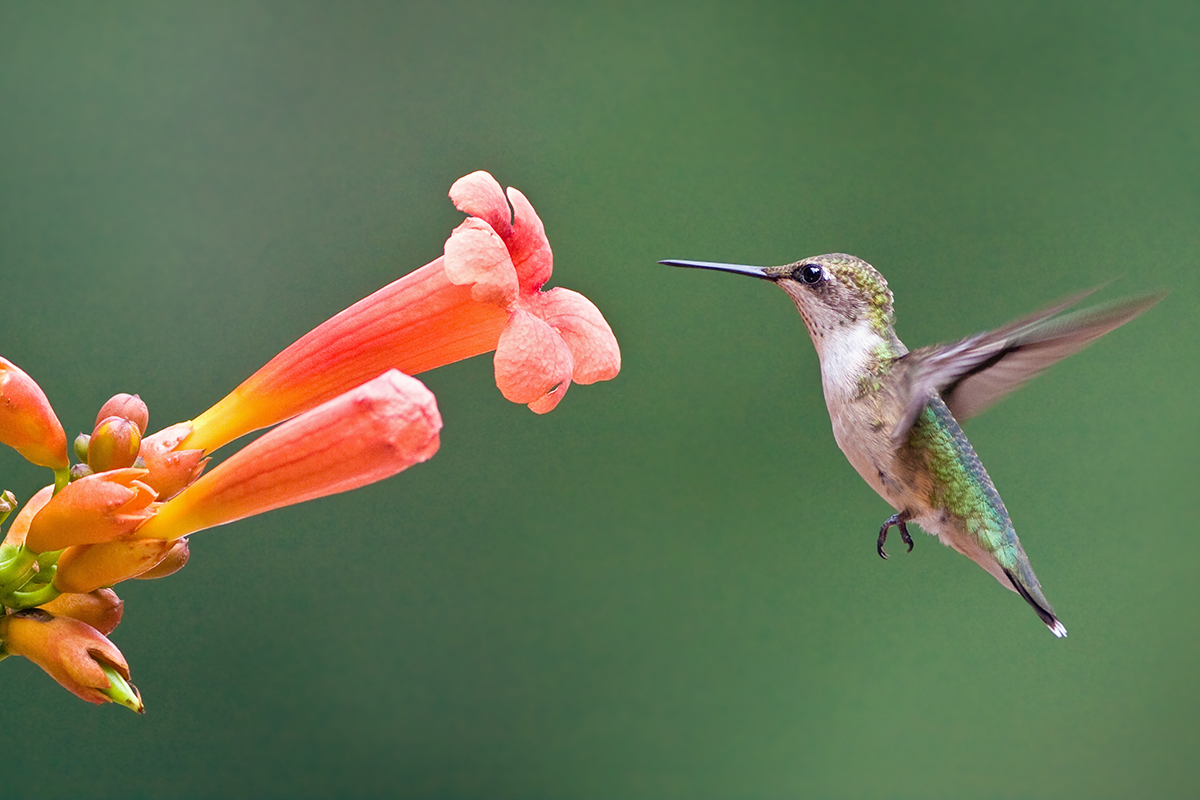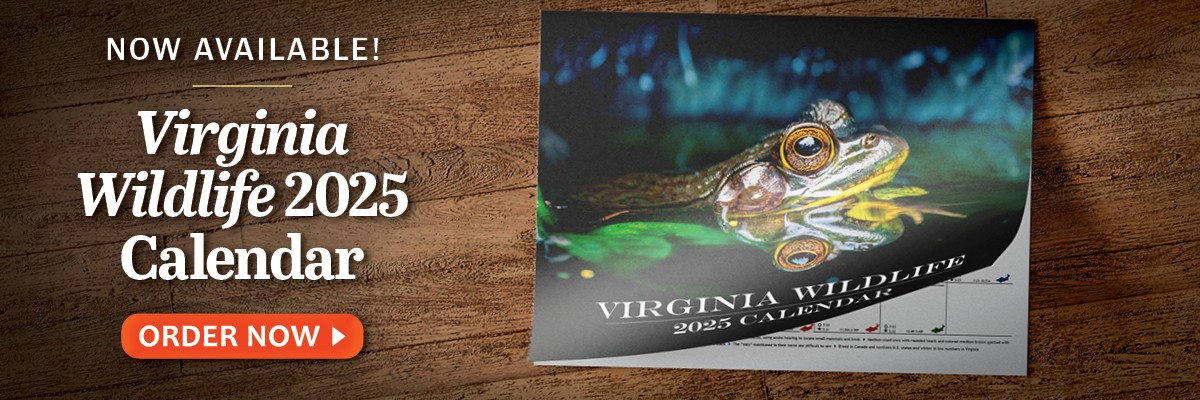
A female ruby-throated hummingbird getting ready to feed at some cardinal flower. Photo by Sally Spicknall
By Steve Living/DWR
With warmer weather thoughts are turning to sprucing up gardens. As spring approaches bird migrations are picking up as well. This is a great time to help make your backyard a Habitat at Home© for one of our favorites—the ruby-throated hummingbird! The Journey North website shows that hummingbirds are beginning to make their way from Central America and parts of Mexico to their breeding grounds in eastern half of North America where they are the only breeding hummingbird. Some of these birds will fly non-stop across the Gulf of Mexico on their trip north. These tiny birds weigh in at about 3 grams (about the weight of a penny) and can be found throughout Virginia both as migrant and as resident breeding birds. They live in a variety of habitats like forests, clearings orchards and backyards.

Male ruby-throated hummingbird showing off the bright red patch that gives them their name. Photo by Shutterstock/Brian A. Wolf
Hummingbirds are a favorite to watch around the garden. Their rapid wingbeats sound a characteristic buzz as they zip back and forth hovering at flowers and feeders to sip on energy-rich nectar. We’re used to seeing hummingbirds feeding this way—but if you watch carefully you’ll see them nabbing small insects as well—in fact these may be up to half of their diet. These birds are very territorial during nesting and will chase other hummingbirds away.
Many beautiful native flowers will attract hummingbirds providing nectar and creating great habitat for other pollinators and birds. Flowers with red, tube-shaped structures are really irresistible to hummingbirds and perfect for their long slender bills. Some favorites are columbine, coral honeysuckle, beebalm and cardinal flower. Using native plants supports healthy habitats and provides food for many beneficial insects—remember birds need bugs! You can document the birds and other wildlife that use your yard with eBird and iNaturalist.

A female ruby-throated hummingbird getting ready to feed at some trumpet creeper. Trumpet creeper is a native plant, but one should be planted with care due to its nature as an aggressive spreader. Photo by Bob Schamerhorn
For more information on what plants are native to your area check out DCR interactive Native Plant Finder or Plant Virginia Natives ©
Great, but where can I buy these? Many local nurseries carry these plants…and Virginia has great nurseries specializing in native plants and you can check out local native plant sales


